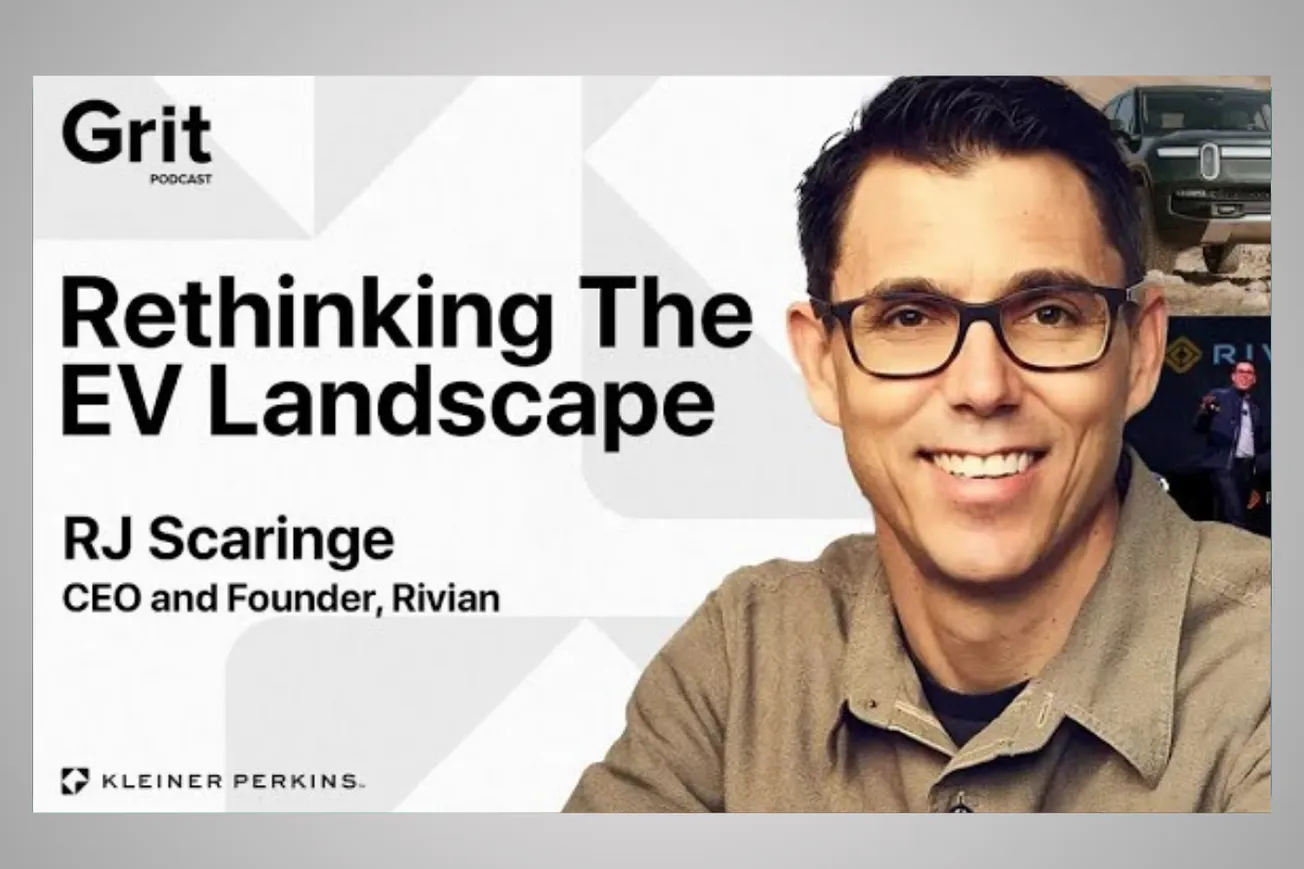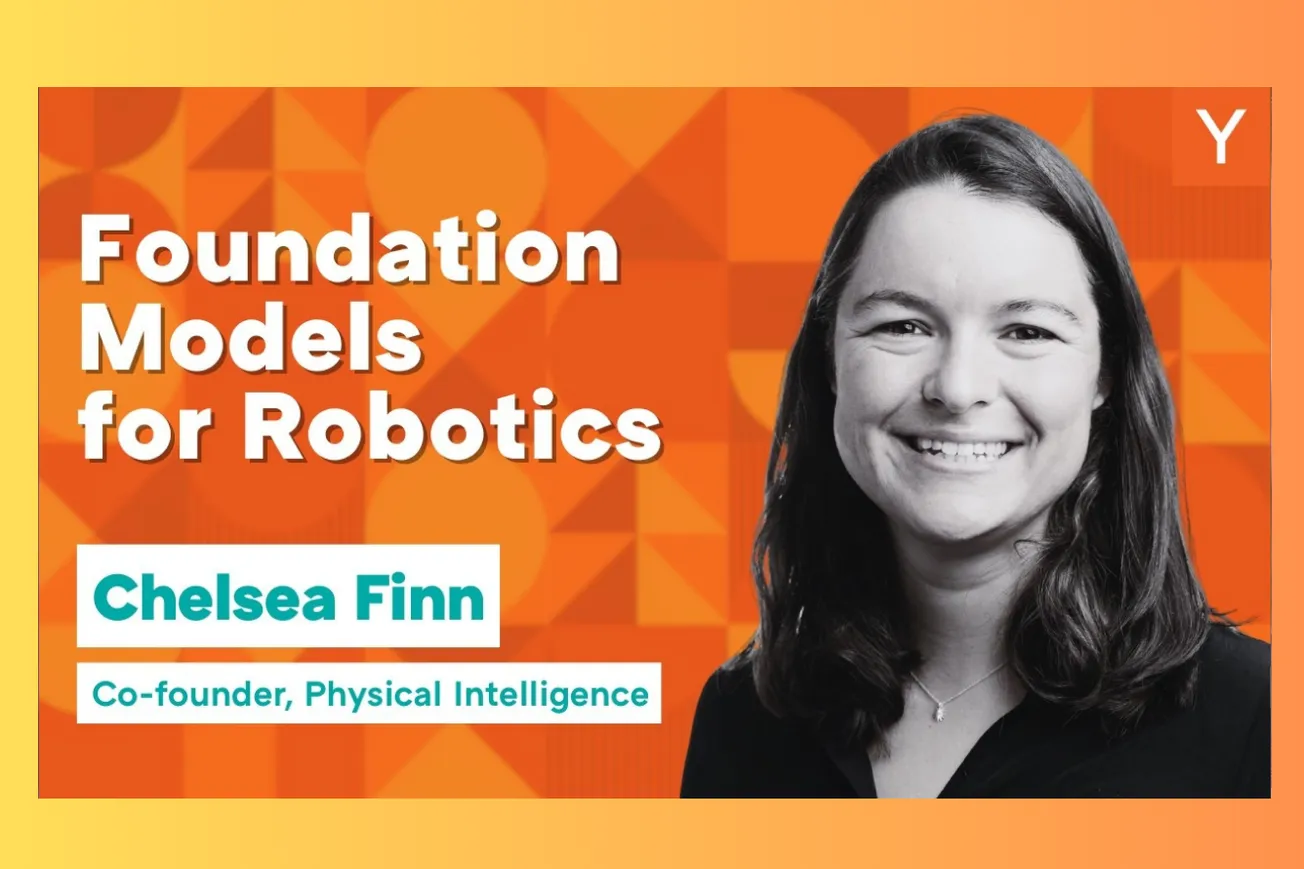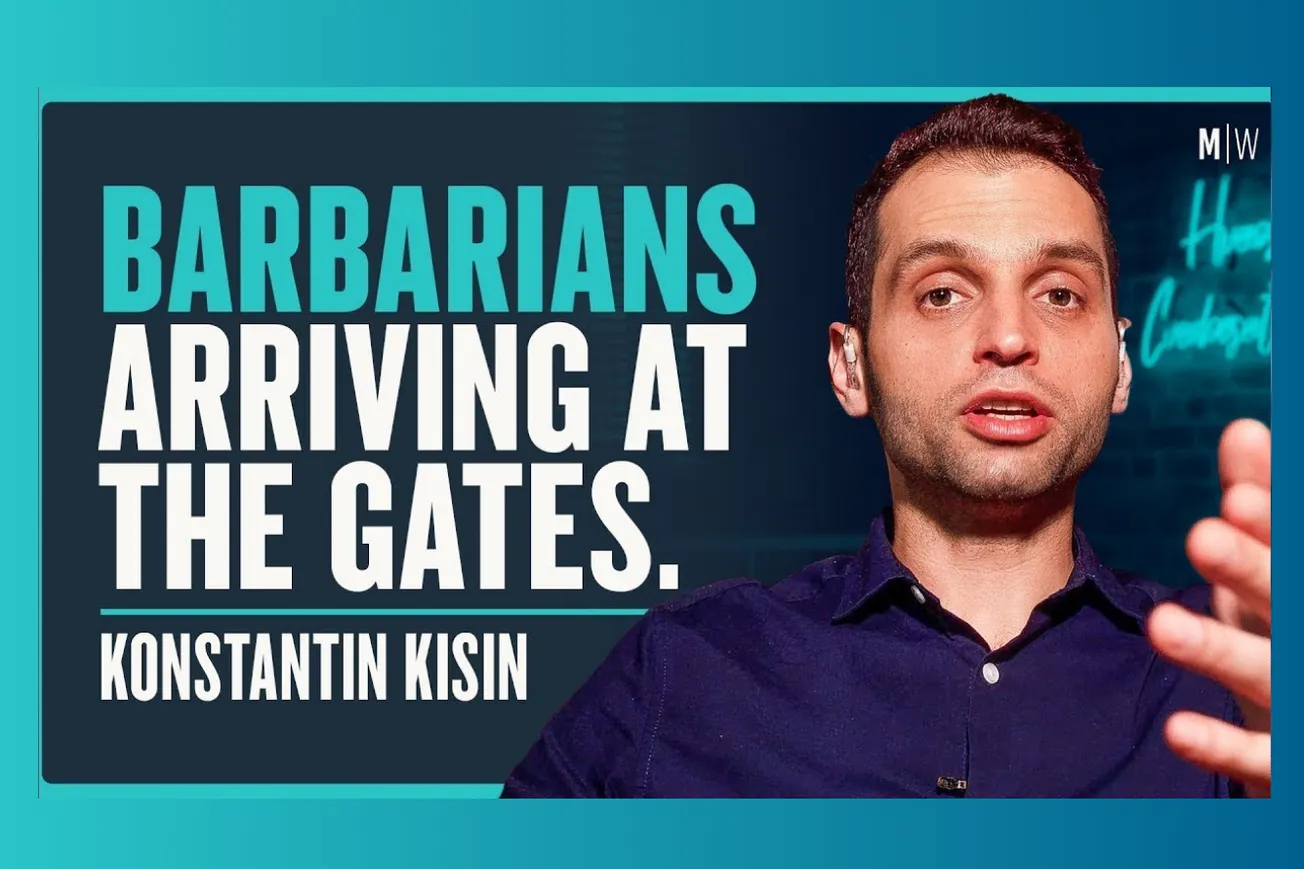Table of Contents
From refinancing his house to securing a $5 billion Volkswagen deal, Rivian CEO RJ Scaringe reveals the brutal reality of building a car company from zero while competing against industry giants spending billions annually.
RJ Scaringe opens up about the decade-long struggle to bring Rivian's first electric truck to market, the strategic pivot that saved the company, and why building a car company requires running through "brick wall after brick wall" while maintaining creative vision under extreme financial pressure.
Key Takeaways
- Starting a car company requires "many billions of dollars" before generating first dollar of revenue, making it one of the most capital-intensive businesses to launch from scratch
- Rivian's strategic pivot from sports car to adventure-focused trucks came after realizing the original product wouldn't drive maximum impact toward sustainable transportation
- The company operates with only 7 computers per vehicle versus traditional automakers' 50-100 electronic control units, enabling seamless over-the-air updates and integrated experiences
- Scaringe spent nearly a decade operating on 3-4 month funding cycles, constantly worried about making payroll while trying to maintain creative product vision
- Rivian's $5 billion Volkswagen partnership validates their technology stack, with VW planning to deploy Rivian's electronics and software across their entire brand portfolio
- The company has grown from 1 person in 2009 to 17,000 employees while maintaining founder-led product development and vertical integration strategy
- Traditional automakers struggle with software updates because they rely on 30-40,000 discrete components from hundreds of suppliers, each with separate computer systems
- Rivian achieved #1 brand satisfaction rating from JD Power in their first two years of production, demonstrating product-market fit in the luxury electric vehicle segment
- The transition to electric vehicles represents replacing 1.5 billion combustion-powered cars globally, requiring massive industrial transformation within a single generation
- Building a car company demands extreme personal sacrifice, with Scaringe operating without salary for years while refinancing his house to fund operations
Timeline Overview
- 00:00–04:55 — Starting a Car Company from Scratch: The impossible economics of launching an automotive startup, requiring billions before first revenue dollar and competing against established giants
- 04:55–07:30 — End of Traditional Cars: How electric transition represents fundamental shift in automotive value creation from mechanical engineering to software and electronics
- 07:30–11:29 — Building a Car's Complexity: Breaking down the 30-40,000 discrete components and multi-tier supplier network that makes automotive manufacturing so challenging
- 11:29–14:38 — Real Challenge for Automakers: Why traditional car companies struggle with software integration due to fragmented supplier relationships and outdated architectures
- 14:38–16:52 — Refusing to Outsource Production: Scaringe's decision to vertically integrate manufacturing despite massive capital requirements and investor skepticism about the strategy
- 16:52–19:59 — Building the Best Electric Truck: The product philosophy of creating vehicles that excel regardless of powertrain, not just "good for an electric vehicle"
- 19:59–25:56 — Rivian's Strategic Pivot: Moving from sports car strategy to adventure-focused trucks after realizing original plan wouldn't maximize sustainable transportation impact
- 25:56–35:16 — 10-Year Struggle to First EV: The brutal fundraising reality of operating on quarterly funding cycles while building complex automotive technology and manufacturing capabilities
- 35:16–39:14 — Different Path from Tesla: Intentionally avoiding sports car strategy to create new narrative around sustainable transportation and reach different customer segments
- 39:14–46:40 — Almost Going Broke: Living on edge of bankruptcy for years, worrying about employee families while maintaining creative vision under extreme financial pressure
- 46:40–55:26 — Entrepreneurship Reality: The psychological demands of building transformative companies, requiring extreme resilience and comfort with perpetual uncertainty
- 55:26–1:01:13 — Managing 25,000 Daily Decisions: How Scaringe structures his day and decision-making processes to handle massive complexity while maintaining product quality
- 1:01:13–END — Hiring and Future Growth: Current expansion plans across software, AI/ML, electronics, and physical retail footprint as company scales operations
The Impossible Economics of Starting a Car Company
Building a car company from scratch represents one of business's most daunting challenges, requiring billions in upfront investment before generating a single dollar of revenue. Scaringe's candid assessment reveals why so few entrepreneurs attempt this path and why those who do face near-insurmountable odds.
Why is starting a car company so much harder than other businesses? The capital requirements create a chicken-and-egg problem: "To get technology you need capital, to get capital you need technology... different than typical software startups where you can have an idea, build a crude version of it, show there's demand, then scale the idea, the first dollar of revenue in a business like this takes many billions of dollars to have spent."
- Zero-Sum Starting Point: Unlike software companies that can bootstrap with minimal resources, automotive startups begin with "no capital, no team, no supply chain, no plant, no brand, no technology" while needing all simultaneously
- Scale Requirements: Competing against established automakers spending "many billions of dollars a year developing their own products" demands matching that investment level to create competitive products
- Supply Chain Complexity: Managing relationships with hundreds of suppliers across multiple tiers, where any single component failure can shut down entire production operations
- Manufacturing Infrastructure: Building production facilities requires billions in capital before producing first vehicle, with no revenue to offset massive ongoing costs
How did Rivian solve the early funding paradox? The solution required redefining success metrics beyond traditional business outcomes: "As long as what Rivian does ultimately does more good than bad... even if the business ultimately doesn't work, at least for my kids' kids' kids... the world would be better off."
This philosophical approach enabled patient capital formation, attracting investors who believed in the mission rather than demanding immediate returns. The strategy allowed Rivian to operate through multiple product iterations and strategic pivots without pressure to generate premature revenue.
The Strategic Pivot That Saved Rivian
Rivian's transformation from sports car startup to adventure vehicle leader demonstrates how founders must balance personal conviction with market reality. Scaringe's willingness to abandon years of work and completely restart reflects the kind of decision-making required for breakthrough success.
What triggered the complete strategic reset? The decision came from gut-level recognition that the original plan wasn't maximizing impact: "I had this nagging feeling in my gut that something wasn't right... it wasn't delivering on building something that didn't exist in the world, it wasn't delivering on opening up minds and opening up perspective on what electrification could mean."
- Mission Alignment: Sports car strategy failed to advance core mission of accelerating transition to sustainable transportation at maximum scale and speed
- Market Differentiation: Tesla had already proven sports car approach worked, making Rivian's similar strategy redundant rather than complementary to industry transformation
- Customer Psychology: Trucks and SUVs represent segments where electric skepticism was highest, creating opportunity to change perceptions about EV capabilities
- Brand Potential: Adventure-focused vehicles enabled storytelling around active lifestyles rather than pure performance metrics
Why choose the hardest possible market entry strategy? The logic centered on maximum impact rather than ease of execution: "We forced ourselves to imagine a world where 100% of the vehicles in the world were electric and this has to differentiate itself relative to those vehicles... the objective wasn't just make an electric truck, it was make the best truck or the best SUV in the world, and you by the way this thing's electric."
The approach deliberately addressed electric vehicle misconceptions by demonstrating superior performance in traditionally challenging applications. Success in trucks and SUVs would prove electric technology's universal viability rather than limiting it to niche sports car markets.
Vertical Integration: Building the Technology Stack In-House
Rivian's decision to develop electronics and software internally contradicted industry wisdom but enabled the seamless integration that traditional automakers struggle to achieve. The strategy required massive upfront investment but created structural advantages that competitors find difficult to replicate.
Why did Rivian choose vertical integration over industry-standard supplier relationships? The decision reflected fundamental beliefs about future automotive value creation: "We made the decision to vertically integrate a lot of our content, all of our electronics, all of our software, we did it purely through the lens of we wanted to make the best products in the world and we also really believed it would create structural cost advantage in the long term."
- Architectural Simplification: Rivian vehicles use 7 computers versus traditional cars' 50-100 electronic control units, dramatically reducing complexity and enabling holistic system updates
- Customer Experience: Simple actions like approaching the vehicle can trigger coordinated responses across multiple systems without requiring coordination among dozens of different suppliers
- Cost Structure: Eliminating redundant hardware and software layers removes "thousands of dollars of cost" while improving functionality and reliability
- Update Capability: Owning the entire stack enables meaningful over-the-air updates rather than the "shallow" changes possible with fragmented supplier systems
How does this compare to traditional automotive architecture? The difference is fundamental: "You end up in the vehicle with 70 to 100 of these little ECUs, these little electronic control units... they're very hard to update, especially update in a holistic way... if you wanted to change that sequence in a traditional car, you've got to coordinate across so many different companies."
Traditional automakers built their systems incrementally over decades, with each new feature requiring additional computers and suppliers. The resulting architecture resembles legacy enterprise software systems: functional but increasingly difficult to modify or improve without major overhauls.
The Volkswagen Partnership: Validation and Scale
The $5 billion Volkswagen deal represents more than capital injection—it validates Rivian's technology strategy while providing scale that justifies the massive R&D investments. The partnership demonstrates how automotive industry transformation creates opportunities for new players to become infrastructure providers.
What makes the Volkswagen partnership strategically significant? The deal proves Rivian's technology advantage over traditional suppliers: "One of the biggest car companies in the world has made the decision to move onto our technology stack... all their cars eventually across the whole brand portfolio."
- Technology Validation: Volkswagen choosing Rivian over established suppliers like Bosch or Continental demonstrates superior capability in critical future technologies
- Revenue Diversification: Technology licensing provides high-margin revenue stream beyond vehicle sales, similar to how Intel sells processors to multiple computer manufacturers
- Scale Economics: Deploying technology across millions of VW vehicles amortizes development costs while accelerating software improvement through larger data sets
- Strategic Positioning: Success with VW creates template for partnerships with other traditional automakers facing similar technology transformation challenges
Why couldn't Volkswagen develop these capabilities internally? The challenge reflects fundamental differences in organizational DNA: "Traditional automakers... haven't historically done that themselves, they've used these suppliers to do a lot of the work... it's a very hard element for traditional automakers to remap."
Established automakers optimized their organizations around mechanical engineering and supplier management rather than software development and systems integration. Changing decades of embedded processes and partnerships requires more time and risk than partnering with companies like Rivian that built capabilities from scratch.
Living on the Edge: The Financial Reality of Deep Tech Startups
Scaringe's account of operating perpetually close to bankruptcy while maintaining product vision illustrates the psychological demands of building capital-intensive businesses. The experience required compartmentalizing financial stress to preserve creative decision-making essential for breakthrough products.
How close did Rivian come to running out of money? The company operated on knife's edge for nearly a decade: "Were you worried about payroll? Oh yeah... we were on the edge... we couldn't raise capital like 'I want to solve for two years of runway or three years of runway,' it was rather we're going to solve through this next milestone 3 months from now."
- Milestone-Based Funding: Investors provided capital in small increments tied to specific achievements rather than extended runway, maintaining constant pressure
- Employee Impact: Transitioning from hiring young employees without families to people with children created additional psychological weight and responsibility
- Creative Preservation: Maintaining product quality and innovation while stressed about survival required extreme mental compartmentalization
- Personal Sacrifice: Scaringe operated without salary for years while refinancing his house to fund company operations
How did constant financial pressure affect product development? The challenge required rapid context switching between existential concerns and creative work: "You spend time with the finance team and be like 'oh shit, we're going to run out of money,' all right let me go talk about the interior color materials... very different mind spaces and that may happen in the span of the same two hours."
This dynamic separates successful deep tech entrepreneurs from those who can't handle the psychological complexity. Building great products requires optimism and creativity, while managing cash flow demands paranoid attention to risks—often simultaneously throughout the same day.
Product Excellence: Building the Best Truck, Period
Rivian's product philosophy centers on absolute excellence rather than relative performance within electric vehicle categories. This approach required developing capabilities across multiple disciplines while maintaining startup agility and focus.
What does "best truck in the world" mean in practice? The standard transcends powertrain considerations: "We forced ourselves to imagine a world where 100% of the vehicles in the world were electric and this has to differentiate itself relative to those vehicles... make the best truck or the best SUV in the world, and you by the way this thing's electric."
- Industry Recognition: Motor Trend describing Rivian's latest update as "the most remarkable car we've ever driven" from journalists who've tested thousands of vehicles
- Customer Satisfaction: JD Power ranking Rivian #1 in brand satisfaction, likelihood to repurchase, and brand appeal for two consecutive years despite being a startup
- Luxury Positioning: US News and World Report naming Rivian "best luxury brand of 2024" demonstrates premium market acceptance
- Performance Integration: Vehicle capabilities enable adventure activities that customers "want to take photographs of," creating emotional connection beyond transportation
How does startup mentality scale to production complexity? The transition required building systems while maintaining founder involvement: "Today the product organization reports up to me, I'm our chief product officer as well... the organization evolved to be that and I actively designed it to work around me as the overall leader of product."
Maintaining product quality at scale demands distributed decision-making systems that preserve founder vision while enabling thousands of employees to make daily choices. Scaringe estimates the engineering team makes 25,000 decisions daily, requiring cultural and process alignment rather than direct control.
The Automotive Industry's Software Transformation
Traditional automakers face structural disadvantages in software development due to decades of supplier specialization and domain-based architectures. Rivian's clean-sheet approach enabled fundamental advantages that established companies struggle to replicate.
Why can't traditional automakers simply update their software like Tesla or Rivian? The problem is architectural: "You have very different technical islands of both hardware and software that now need to be updated or changed simultaneously... something as simple as how do what happens when you approach the car, so hard to change that you see very few changes happen to the car post-launch."
- Supplier Fragmentation: Each component system comes from different suppliers with proprietary software and update processes
- Integration Complexity: Coordinating changes across dozens of companies and systems makes even simple modifications extremely difficult
- Historical Architecture: Systems designed around individual functions rather than holistic vehicle operation create artificial barriers to integration
- Economic Incentives: Suppliers optimize for their individual components rather than overall vehicle experience or updateability
What advantages do software-first architectures provide? The benefits extend beyond individual features to systemic capabilities: "For us that's really easy because all those steps are happening on Rivian computers with Rivian software... you have a lot fewer suppliers, software becomes a much more manageable part of the technology stack."
Software-centric design enables continuous improvement rather than fixed functionality at purchase. This capability becomes increasingly important as vehicles become platforms for services and experiences rather than purely transportation devices.
Managing Complexity: 25,000 Decisions Per Day
Scaling from hands-on product development to organizational leadership required Scaringe to develop systems for distributed decision-making while maintaining product quality. The evolution demonstrates how founder roles must transform as companies grow.
How does a CEO handle product decisions across thousands of employees? The solution involves systematic delegation with cultural alignment: "If you say across the engineering team that every engineer is making five decisions, we'll make 25,000 decisions a day... maybe I'm going to participate in 0.1% of those... but actually the system of how products are developed and how we make decisions becomes really important."
- Decision Architecture: Building frameworks that enable consistent choices without requiring founder approval for every detail
- Time Management: Structuring days around energy levels, with creative decisions early and execution tasks later
- Cultural Transmission: Ensuring company values and product vision permeate throughout organization rather than remaining concentrated at top
- Strategic Focus: Identifying which decisions require direct founder involvement versus those that can be delegated to trained teams
What does sustainable leadership look like in high-growth companies? The approach requires intentional personal systems: "I'm much more intentional on making sure the decision quality is high... making sure the right brains at the right time of day and the right mindset are being deployed on these hard decisions."
Effective leadership at scale demands recognizing that brute force approaches (19-hour days, seven days per week) become counterproductive. Instead, success requires optimizing decision quality through better processes, timing, and delegation rather than simply working more hours.
The Future of Transportation: 1.5 Billion Vehicles to Replace
Rivian's mission extends beyond building successful products to catalyzing industry-wide transformation toward sustainable transportation. The scale of required change represents one of humanity's largest industrial transitions.
What does complete transportation electrification require? The scope is staggering: "We have 1.5 billion cars on a planet which are combustion powered and it's hard to imagine this, but in my lifetime all those vehicles need to be replaced with electric vehicles."
- Industrial Scale: Replacing the global vehicle fleet requires coordinated effort across manufacturers, suppliers, infrastructure, and policy
- Generational Timeline: Complete transition must occur within single human lifetime to address climate challenges
- Technology Evolution: Electric vehicles must achieve cost and performance parity across all vehicle segments, not just premium niches
- Infrastructure Dependencies: Success requires parallel development of charging networks, electrical grid capacity, and renewable energy sources
How does Rivian's strategy serve this broader mission? The company positions itself as catalyst rather than sole solution: "Even if the business ultimately doesn't work, at least for my kids' kids' kids... the world would be better off... we can influence the auto industry to accelerate some of its efforts just by showing them what's possible."
This perspective enabled patient capital formation and long-term strategic thinking while maintaining accountability for business results. The dual focus—building successful company and advancing industry transformation—provided resilience during difficult periods when immediate commercial success seemed uncertain.
Entrepreneurial Resilience: Running Through Brick Walls
Scaringe's definition of entrepreneurial grit emphasizes persistence through sustained difficulty rather than dramatic moments of crisis. The mindset required for transformative ventures demands comfort with prolonged uncertainty and repeated failure.
What defines entrepreneurial grit in practice? The concept centers on sustained endurance: "If you've got blisters on your hands, sores on your feet and a headache, you just continue going through... it's extremely high resilience... it's easy to sort of think of entrepreneurs as this easy lifestyle... but along the way it takes like running through brick wall after brick wall after brick wall."
- Psychological Conditioning: Building tolerance for sustained discomfort and uncertainty rather than seeking quick resolution
- Perspective Management: Maintaining long-term vision while handling immediate crises and setbacks
- Decision Quality: Preserving creativity and strategic thinking despite constant stress about survival
- Personal Sacrifice: Accepting years of financial hardship and lifestyle constraints in service of larger goals
How does this mindset scale with company growth? The challenge evolves from personal survival to collective responsibility: "There's all these conflicting emotions that I had... is this the right product? Is it the right strategy? Am I capable of doing this?... but at the end of the day, I try really hard not to let that be overly distracting."
Leadership in high-stakes ventures requires compartmentalization—acknowledging risks and uncertainties while maintaining confidence and vision necessary to inspire others and make quality decisions under pressure.
Common Questions
Q: Why is starting a car company so much more difficult than other businesses?
A: Car companies require billions in upfront investment before generating first revenue, competing against established players spending billions annually on R&D.
Q: How did Rivian differentiate itself from Tesla's strategy?
A: Instead of following Tesla's sports car to mass market path, Rivian focused on trucks and SUVs to change perceptions about electric vehicle capabilities in traditionally skeptical segments.
Q: What makes Rivian's technology stack different from traditional automakers?
A: Rivian uses 7 computers per vehicle versus traditional cars' 50-100 electronic control units, enabling seamless updates and integrated experiences impossible with fragmented supplier systems.
Q: How close did Rivian come to bankruptcy during development?
A: The company operated on 3-4 month funding cycles for nearly a decade, with Scaringe constantly worried about making payroll while maintaining product development.
Q: What does the Volkswagen partnership mean for Rivian's business model?
A: The $5 billion deal validates Rivian's technology while providing high-margin licensing revenue as VW deploys Rivian's electronics and software across their entire vehicle portfolio.
Q: How does Rivian manage thousands of daily product decisions?
A: Scaringe participates in roughly 0.1% of the 25,000 daily engineering decisions, focusing on building systems and culture that enable consistent high-quality choices throughout the organization.
Conclusion
The Rivian story illustrates both the immense challenges and potential rewards of building transformative companies in capital-intensive industries. Scaringe's journey from concept to $5 billion partnerships demonstrates how founders can create breakthrough businesses by combining clear mission focus, strategic flexibility, and extreme personal resilience.
The company's success in achieving premium brand status while advancing sustainable transportation provides a template for entrepreneurs tackling other large-scale industrial challenges. The key insights—redefining success metrics, building for long-term advantage, and maintaining quality under pressure—apply beyond automotive to any venture seeking to catalyze broad industry transformation.





